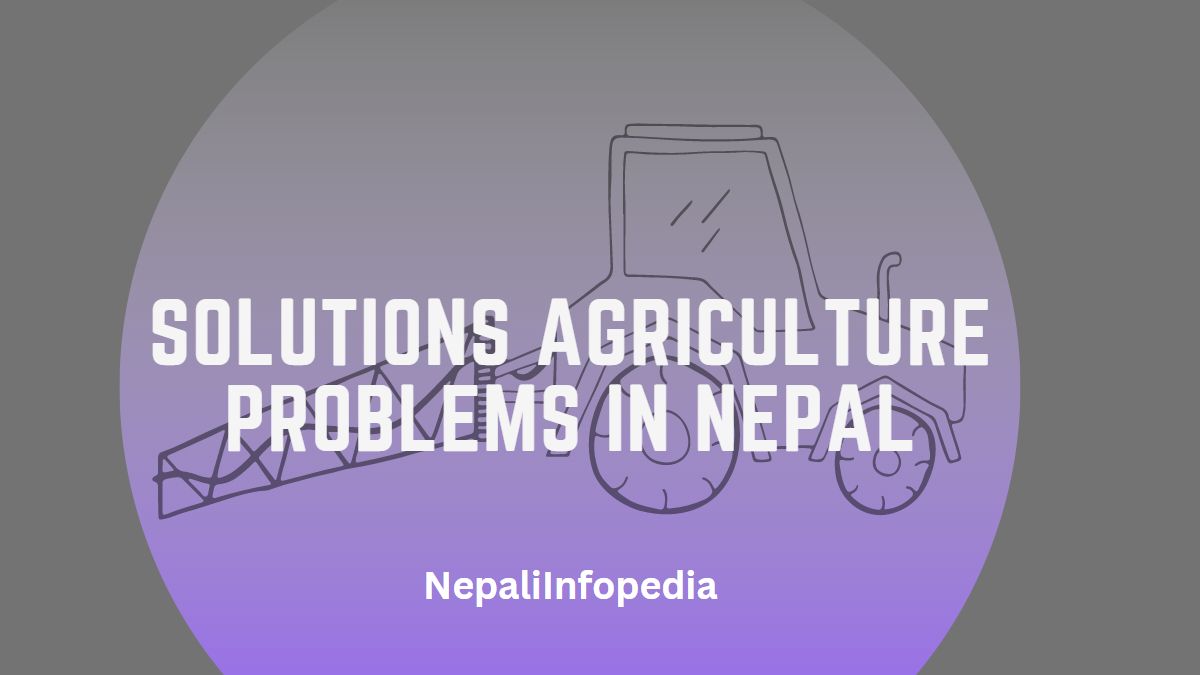Agriculture is a vital sector in Nepal, but it faces many challenges that impede its growth and development. Poor land tenure, limited market access, and inadequate infrastructure are just a few of the problems that farmers in Nepal face. In addition, Nepal is vulnerable to the impacts of climate change, which can devastate crops and undermine the livelihoods of farmers. However, there are solutions that can help address these challenges and improve the agricultural sector in Nepal. By implementing these solutions, the government can help farmers overcome the challenges they face and build a more sustainable and prosperous agricultural sector.
Solutions for Agriculture in Nepal
1. Land reform
The government could implement land reform policies that help small farmers gain access to land. This could involve redistributing land from large landowners to small farmers, providing land to landless farmers, or implementing policies to make it easier for small farmers to purchase land.
2. Market Access
The government could work to improve infrastructure and transportation networks to make it easier for farmers to get their crops to market. This could involve building roads, bridges, and other transportation infrastructure, or providing support for marketing and distribution.
3. Climate-resilient agriculture
The government could support the adoption of climate-resilient agricultural practices, such as the use of drought-resistant crops and irrigation systems. This could involve providing training and technical assistance to farmers, as well as funding for the development and implementation of these practices.
4. Extension Services
The government could provide extension services to help farmers learn about new technologies and best practices. Extension services typically involve the delivery of information and technical assistance to farmers through trained extension agents or other means.
Read Similar: Solutions to untouchability in Nepal
5. Access to credit
The government could work to improve access to credit for small farmers, so they can invest in their farms and improve productivity. This could involve establishing credit programs specifically for small farmers or working with banks and other financial institutions to make credit more readily available to this group.
6. Investment in research and development
The government could invest in research and development to identify new crop varieties and technologies that are better suited to the local climate and soil conditions. This could involve funding research at universities and other institutions, or supporting the development of private-sector research and development efforts.
Read: Top 15 Food Crops Of Nepal
7. Promotion of small-scale irrigation
The government could support the development of small-scale irrigation systems, such as drip irrigation and sprinkler systems, to help farmers cope with drought and other challenges. This could involve providing funding for the development and implementation of these systems, as well as technical assistance to farmers.
8. Support for value-added agriculture
The government could help farmers add value to their crops by providing support for processing, packaging, and marketing. This could involve funding for the development of processing facilities or marketing campaigns, or providing technical assistance to farmers to help them improve the quality and value of their crops.
Read Similar: Causes of untouchability in Nepal
9. Investment in rural infrastructure
The government could invest in rural infrastructure, such as roads and bridges, to improve access to markets and other resources. This could involve building new infrastructure or repairing and maintaining existing infrastructure.
10. Education and training
The government could provide education and training programs to help farmers learn new skills and adopt better practices. This could involve providing training on topics such as agricultural techniques, business management, and marketing, or supporting the development of educational programs at schools and other institutions.
In conclusion, the agriculture sector in Nepal faces many challenges, including landlessness, limited market access, poor infrastructure, and the impacts of climate change. However, by implementing solutions such as land reform, market access, climate-resilient agriculture, extension services, access to credit, and investment in research and development, the government can help farmers overcome these challenges and build a more sustainable and prosperous agricultural sector. These solutions have the potential to improve the livelihoods of farmers in Nepal, as well as contribute to the overall development of the country. By investing in the agriculture sector, the government can help Nepal’s farmers thrive and contribute to the country’s economic growth.
